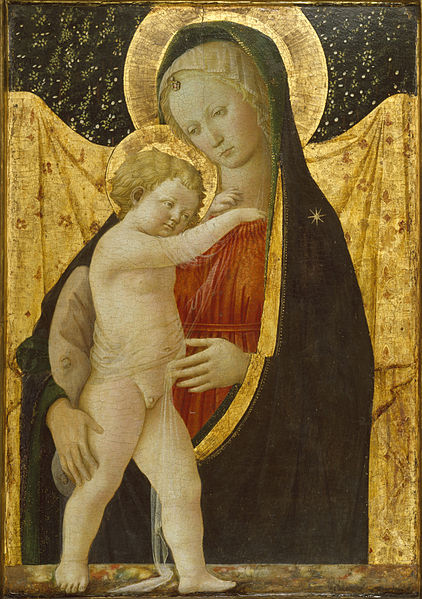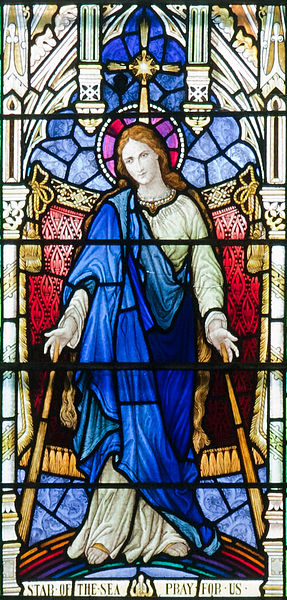"O sanctissima" is a Roman Catholic hymn in Latin, seeking the prayers of the Blessed Virgin Mary, and often sung in various languages on her feast days. The earliest known publication was from London in 1792, presenting it as a traditional song from Sicily; but no original source or date has been confirmed for the simple melody or the poetic text. The tune is often called "Sicilian Mariners Hymn" or similar titles, referring to the seafarers' nightly invocation of Mary as their maternal protector: Our Lady, Star of the Sea. The tune has been notably reused for the German Christmas carol "O du fröhliche" and the English recessional hymn "Lord, Dismiss Us With Thy Blessing", and appears to have been adapted as the first half of the American civil rights anthem "We Shall Overcome".
Earliest known printing: European Magazine, November 1792
Our Lady, Star of the Sea
Our Lady, Star of the Sea is an ancient title for Mary, the mother of Jesus. The words Star of the Sea are a translation of the Latin title Stella Maris.
The miraculous statue of Our Lady, Star of the Sea in Basilica of Our Lady (Maastricht), the most important Marian shrine of the Netherlands.
The star on Mary's robe alludes to her epithet of Stella Maris
Our Lady, Star of the Sea, Goleen Church of Our Lady, Ireland.
Stella Maris Lighthouse on the Uruguay River near the town of Concepción del Uruguay in Argentina.





